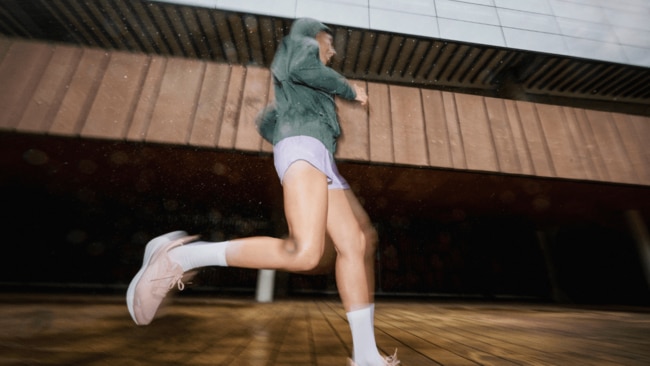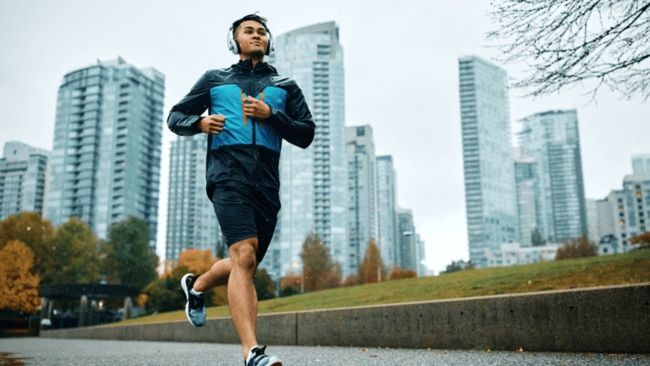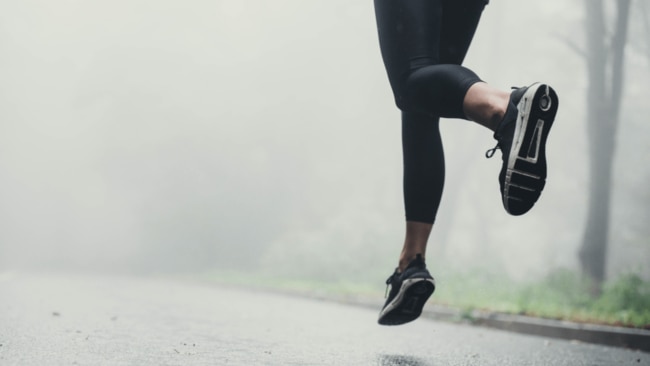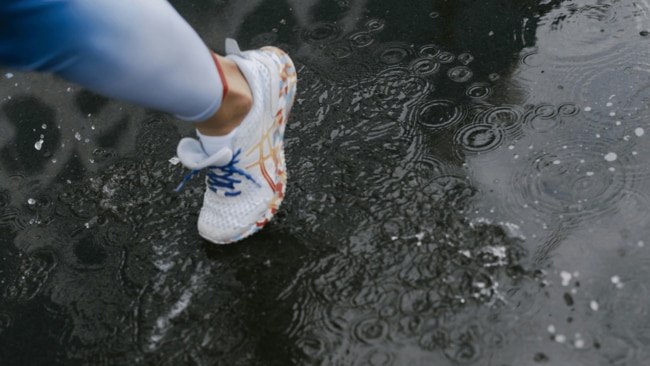10 tips for running in the rain, without the stress of slipping
The changing weather doesn't have to end your run

Lifestyle
Don't miss out on the headlines from Lifestyle. Followed categories will be added to My News.
Want to get your daily run in but concerned about running in the rain? Here are the top tips to get your workout in without the fear of slipping.
Whether the sight of a raindrop on your window is enough to ruin your day or pushes you outside to skip through puddles, the rain can get in the way of many of our plans.
Brunch, picnics, footy games, beach days, some things just don’t go well when you’re soggy.
The possibility of a big slip in public can be enough to push many of us to abandon our plans for a run, but it doesn’t have to. Running in the rain can feel refreshing and romantic, and while it’s not worth braving the weather if thunder, lightning or strong winds are about, with the correct preparation, you can live your main character movie moment and run right through the rain

We asked two avid runners for their top tips for a great wet-weather run.
Seasoned distance runner and commercial leader at Decathlon Australia, Tim Desmarais, says, “Starting in the rain can be tough, but once you’re out there, a light drizzle can feel surprisingly refreshing—and you'll often have the track or trail to yourself. Training in unpredictable weather can help build mental toughness and can prepare you for whatever race day throws your way.”
There are of course some necessary adjustments to stop you from becoming a hazard pre and post-run.

Pre-rain run prep
No matter how many times we’re reminded how important a warm-up is, many of us still jump straight into a jog without a stretch.
But Desmarais says, “warming up properly is just as important, especially in wet conditions. Try doing it indoors or under cover to avoid getting cold and soaked before you even start your run.”
And while no one wants to run accompanied only by incessant head noise, the avid runner says you may want to think twice about grabbing your headphones.

“Leave the headphones at home or keep the volume low—rain and low light demand extra awareness, especially around traffic or other hazards.”
“And if you're carrying your phone, remember that not all devices are water-friendly. A simple snap-lock bag works well to keep it dry while still letting you use it as you normally would.”
How to make your wet-weather run more comfortable
Moisture-wicking gear is key to avoiding chafing and blisters.

Meanwhile, your shoes are of course the most important thing to avoid a big fall.
“Wearing running shoes with solid grip and shortening your stride slightly can help maintain stability and control. Remember, the performance of your shoes declines with use – particularly the grip and cushioning”, Desmarais says.
Dedicated runner and Body+Soul news writer, Jess Campbell also advises us to look out for “shoes suited more for trails with better tread” to help us to grip the road better.

When it comes to improving your visibility through the pouring rain, Desmarais says, “a cap with a brim helps shield your eyes from falling rain, while reflective gear such as an arm band and bright clothing make you more noticeable to others on the road.”
While you might want to layer up to face the cold, wet conditions, Decathlon’s commercial leader says, “many waterproof layers aren't breathable, which can trap heat and sweat. Instead, opt for lightweight, ventilated gear that keeps rain out while allowing moisture and body heat to escape. And remember—just because you’re getting wet on the outside doesn’t mean you’re not sweating on the inside. Stay on top of your hydration just as you would on any other run to avoid dehydration.”
Campbell agrees on the importance of staying dry.

Her handy tip if weather-appropriate clothing is out of your budget?
“If you can’t afford a waterproof jacket, cutting two arm holes in a garbage bag also works to keep the rain off you (guilty of this)”.
Post-rain run recovery
“While it’s tempting to finish and immediately jump into the car or head for a hot shower, take a few minutes to complete your usual cool-down routine somewhere sheltered or undercover. This helps your body transition safely and reduces the risk of tightness or soreness later on”, Desmarais tells B+S.

A little more planning is required for a wet-weather run, and it’s important to dry off as quickly as possible.
You likely don’t want to stay in your drenched clothes for long anyway, but the expert says, “once you’ve cooled down, change out of wet clothes right away to avoid getting chilled.”
“Have a towel, a waterproof bag for your wet gear, and a full change of dry clothes ready – including socks and a spare pair of shoes. It’s also a smart idea to leave a towel in the car to sit on during the drive home—wet running gear and fabric car seats are never a good mix.”
And if you're worried about the possibility of your shoes staying wet forever, Desmarais says, “the best way to dry your shoes is to stuff them with dry newspaper and change it out every few hours."
"Once the initial moisture is absorbed, leave fresh paper inside overnight. In most cases, you’ll wake up with dry, run-ready shoes for the next day. Do not put your shoes in the dryer.”
More Coverage
Originally published as 10 tips for running in the rain, without the stress of slipping





